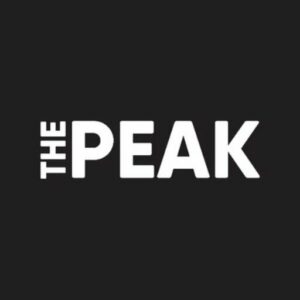By: Maia Lomelino (She/They), SFU Student
Content warning: mentions of residential schools and internment camps.
It’s not new that the Shipyards region in North Vancouver is becoming a hotspot for entertainment on the North Shore. With easy access from the Seabus, it features entertainment for all ages and tastes, and this is exactly where you’ll find the Museum of North Vancouver (MONOVA).
MONOVA opened to the public in December 2021, but was only finalized with a brand-new climatized (temperature and humidity-controlled) area for special exhibits in 2022. Located on Esplanade street right by the Lonsdale Quay and Seabus terminal, the small but mighty museum is home to a permanent exhibit about the city and neighbourhood histories. It’s also a hub for events and community building.
Right at the entrance, between the products in the gift shop, is one of the coolest items in Monova’s collection: a bright red streetcar that used to roam Lonsdale Avenue from 1912–1946. The piece on display was restored after spending years serving as a chicken coop. The best part about the museum’s lounge is that it’s free to look around; while ticket prices to the main exhibit vary, students with ID pay only $10.
Passing the magnificent Twin Sisters panel, carved in red cedar to mark the museum’s commitment to Truth and Reconciliation, is the main community space. Here, visitors can find interactive tables run by volunteers and a space for kids to have fun with the museum’s themes, building paper streetcars, or colouring. Walk the short corridor that simulates a BC forest to find the main gallery, where a circular structure representing a cedar tree harbours Indigenous objects and celebrates the Sḵwx̱wú7mesh (Squamish) and Səl̓ílwətaɬ (Tsleil-Waututh) Nations.
The main exhibit covers the history of North Vancouver, highlighting its Indigenous origins. Pass through historical eras, like the immigrant neighbourhood development, the Moodville timber production era, the Lions Gate Bridge and Shipyards constructions, and World War II efforts. There are even archaeological findings from a Nikkei settlement that got abandoned around the same time Canada created Japanese internment camps, remnants of the tragic events these communities went through.
Take time to honour residential school survivors by hearing their names and listening to Elders give advice to Indigenous youth in the touching installation that reflects on the horrors of residential schools and and their lasting consequences. Then, learn about Indigenous plants and wildlife from the region in the vivid natural history installation.
You can also learn about the history of North Shore Rescue, the old Grouse Mountain Chalet, and Phil Nuytten. Nuytten was an entrepreneur and inventor who created a deep sea exploration suit, helped study the Titanic, and trained astronauts. Nuytten’s company also develops submersibles — a small submarine that needs an overwater support vessel (real deal ones, not tin cans for billionaires).
Currently, the special exhibit room (on until late December) presents the history of the Shipyards neighbourhood with items from the old North Vancouver Hotel. This includes a very interesting pharmacy cabinet with medicine that would make any doctor today run to the hills, like laudanum, cocaine, and opium. According to museum staff, the place where Lift Bakery is today used to be a pharmacy!
The coolest part about the MONOVA exhibits is that most of them are interactive, so the visit becomes even more fun for kids and adults alike. Visitors can also participate in a scavenger hunt to locate specific items in the gallery. Visiting MONOVA is a delightful albeit short experience that’s definitely worth it for those interested in local history and everyone hoping to learn more about the North Shore.
September will be a month full of Truth and Reconciliation events, like a scrapbooking workshop with Tsawaysia Spukwus (Sept 7), Reconciliation through Storytelling with Chief Dr. Robert Joseph (Sept 14), Cultural Knowledge Sharing with Sheryl Rivers (Sept 16), and the Connection Speakers Series with Leigh Joseph (Sept 23).






































